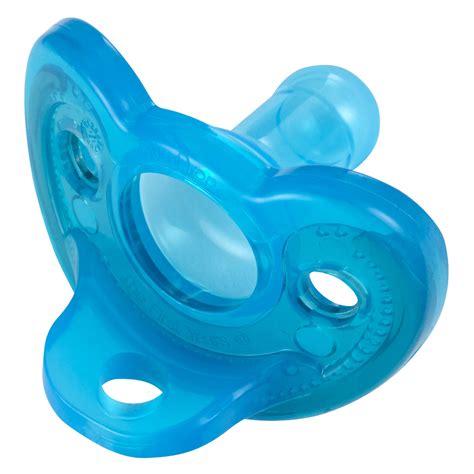The Pacifier Dilemma: A Comprehensive Guide to Infant Soothers
Pacifiers, also known as "soothers" or "dummies," are ubiquitous in the world of infant care. While they can provide numerous benefits for both babies and parents, it's crucial to understand the potential risks and use them judiciously. This comprehensive guide will delve into the complexities of pacifier use, equipping you with the knowledge to make informed decisions for your little one.
Benefits and Risks of Pacifiers
Pacifiers can offer several advantages for infants:

-
Comfort and security: Sucking on a pacifier can mimic the sensation of breastfeeding, providing comfort and a sense of security for babies.
-
Pain relief: Pacifiers can help soothe pain caused by teething or other minor discomforts.
-
Sleep induction: Sucking on a pacifier can promote relaxation and help babies fall asleep more easily.
-
Reduced risk of SIDS: Some studies suggest that pacifier use may reduce the risk of sudden infant death syndrome (SIDS).
However, there are also potential risks associated with pacifier use:
-
Dental problems: Prolonged pacifier use can interfere with the proper development of the teeth and jaw, potentially leading to malocclusions.
-
Ear infections: Pacifiers can increase the risk of ear infections, especially in young infants.
-
Delayed speech development: Excessive pacifier use can limit the frequency of speech sounds, potentially delaying language development.
When to Introduce a Pacifier

The AAP (American Academy of Pediatrics) recommends waiting until the baby is at least 3 to 4 weeks old before introducing a pacifier. This delay allows for the establishment of breastfeeding. It's important to avoid using pacifiers in newborns, as they can interfere with breastfeeding and milk production.
How to Choose a Pacifier
When selecting a pacifier, consider the following factors:
-
Material: BPA-free silicone or natural rubber pacifiers are considered safe.
-
Shape: The nipple should be orthodontic, meaning it conforms to the shape of the baby's mouth.
-
Size: It's important to choose a pacifier that is the right size for the baby's age and mouth.
Effective Strategies for Using Pacifiers:
To minimize potential risks and maximize benefits, follow these strategies:
-
Use pacifiers judiciously: Only offer a pacifier for comfort, not as a substitute for feedings.
-
Set a time limit: Limit pacifier use to no more than an hour at a time.
-
Avoid using pacifiers for extended periods: Prolonged use can increase the risk of dental problems and ear infections.
-
Wean off pacifiers by age 2: Most experts recommend weaning off pacifiers by 18 to 24 months, to reduce the risk of dental issues.
Tips and Tricks:

-
Establish a regular cleaning routine: Wash pacifiers daily in warm, soapy water and sterilize them regularly.
-
Don't attach pacifiers to the baby's crib or stroller: This can encourage dependency and interfere with sleep.
-
Consider using a pacifier clip: A pacifier clip can help keep the pacifier clean and within reach.
-
Avoid dipping pacifiers in sugar or honey: This can damage the baby's teeth.
Common Mistakes to Avoid:
-
Using pacifiers as a substitute for breastfeeding: Pacifiers should not interfere with breastfeeding.
-
Forcing a pacifier on a baby: If a baby doesn't want a pacifier, don't force it.
-
Using pacifiers for excessively long periods: Limit pacifier use to avoid dental problems and ear infections.
-
Not cleaning pacifiers regularly: Dirty pacifiers can harbor bacteria and increase the risk of illness.
Why Pacifier Use Matters
Pacifiers can play a significant role in an infant's development. By providing comfort, reducing pain, and promoting sleep, they can contribute to a baby's overall well-being. However, it's crucial to use pacifiers judiciously and avoid potential risks. By following the recommendations outlined in this guide, you can ensure that your little one benefits from pacifiers without compromising their health and safety.
Benefits and Risks of Pacifiers: A Detailed Comparison
| Benefit |
Risk |
| Comfort and security |
Dental problems |
| Pain relief |
Ear infections |
| Sleep induction |
Delayed speech development |
| Reduced risk of SIDS |
|
Effective Strategies for Using Pacifiers: A Summary
- Use pacifiers judiciously |
- Set a time limit |
- Avoid using pacifiers for extended periods |
- Wean off pacifiers by age 2 |
Tips and Tricks for Using Pacifiers
- Establish a regular cleaning routine |
- Don't attach pacifiers to the baby's crib or stroller |
- Consider using a pacifier clip |
- Avoid dipping pacifiers in sugar or honey |
Common Mistakes to Avoid
- Using pacifiers as a substitute for breastfeeding |
- Forcing a pacifier on a baby |
- Using pacifiers for excessively long periods |
- Not cleaning pacifiers regularly |

